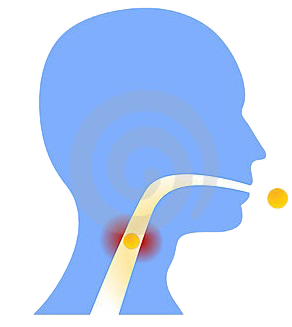Head & Neck
As otolaryngologists, we specialize in diagnosing and treating diseases of the head and neck. This includes the medical and surgical management of many problems that affect the delicate structures of the neck.
LYMPH NODES
Lymph nodes are located throughout the body and function like filters for the immune system. When the lymph nodes in the neck are enlarged there is usually some sort of inflammation responsible such as an infection. They can also be enlarged in the presence of a tumor. At North Shore ENT, we will evaluate you to find the cause of the inflammation and make testing and treatment recommendations.
NECK MASSES
Neck masses are fairly common and are often the source of significant concern. These may occur in children of all ages as well as in adults. There are a variety of possible causes for neck masses including infectious and/or inflammatory diseases which can result in swollen glands. They may also be congenital cysts which have been present since birth, traumatic in origin (i.e., caused by an injury) or neoplastic disease. Whatever the cause of the neck mass, a thorough evaluation by a North Shore ENT otolaryngologist is recommended.Diagnosing the neck mass can sometimes be made after a simple history and a complete physical examination in our office. If additional testing is required we will arrange it for you. Once the diagnosis has been obtained, your doctor will discuss this and treatment options with you.
Fortunately, most neck masses are benign (non-cancerous). Nonetheless it is imperative that all persistent neck masses be evaluated by an otolaryngologist for diagnosis and treatment.
THYROID & PARATHYROID DISORDERS
The thyroid gland is located in the center of the neck above the sternum and functions to regulate metabolism. Most thyroid problems are caused by thyroid glands that work too hard or not hard enough and can be helped with medication. However, sometimes patients will develop nodules or lumps in their thyroid gland. Needle aspiration, usually done in the office but sometimes with radiology assistance, can usually tell if the nodule is suspicious. Further testing may be recommended, and surgery can easily eliminate this problem.The parathyroid glands are located in the neck attached to the thyroid gland. They are partially responsible for controlling the level of calcium in the bloodstream, bones and muscles. Many times these glands malfunction and require either medical or surgical treatment. If the calcium level in your blood is too high, symptoms such as tiredness, muscle aches, nausea, and mood changes can occur. A simple blood test is all that is required to diagnose parathyroid disease and surgery can usually eliminate the problem.
SALIVARY GLAND DISORDERS
There are four major glands that produce saliva. The parotid glands are in front of and slightly below the ear on both sides and the submandibular glands are underneath the jaw on both sides. In addition, there are hundreds of tiny minor salivary glands throughout the mouth and throat. The major glands can occasionally get infected and swell, requiring a course of antibiotics as treatment.Sometimes the salivary glands can develop stones that are similar to kidney stones. Persistent swelling may signal the presence of a tumor, which is generally benign but can occasionally be malignant. When lumps of the salivary gland develop, a diagnostic workup will be completed and medical treatments and surgical options will be discussed if indicated. When a persistent mass of the salivary gland develops, a diagnostic work-up may include CT or MRI, needle-aspiration, and/or surgery to remove the mass.
CANCER
Cancers involving the structures of the head and neck are very common, especially in patients who use tobacco and/or alcohol. Tumors can form in the mouth, throat and voice box due to tobacco and alcohol, and occasionally for no apparent reason. Symptoms of head and neck cancer can include ear pain, hoarseness, difficulty opening the mouth, painful or difficult swallowing, or may not have any symptoms at all except a mass in the neck. Cancers also can be located in the saliva glands, thyroid, sinuses and lymph nodes, such as in lymphoma.If a person develops cancer of the head and neck, our doctors will organize a multifaceted approach to care in order to streamline the evaluation and treatment process. Cancer treatment will frequently involve several different types of medical doctors such as medical oncologist, radiation therapist, family doctors and other specialists as indicated.




